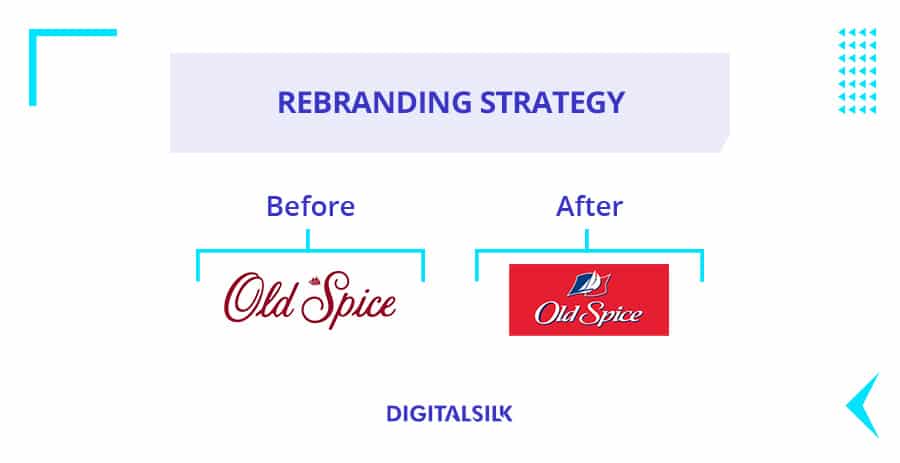Rebranding can be a game-changer for businesses looking to revitalise their image and better align with evolving market demands. However, the process of rebranding services is complex and fraught with potential pitfalls. Missteps in rebranding can lead to confusion, wasted resources, and even damage to your brand’s reputation. To help you navigate this transformative journey successfully, we’ve compiled a list of seven common mistakes to avoid when undertaking rebranding services.

1. Lack of Clear Objectives
Before diving into rebranding, it’s essential to have a clear understanding of why you’re rebranding and what you hope to achieve. Whether it’s to modernise your image, appeal to a new market segment, or distance yourself from a negative reputation, your objectives should be well-defined. Without clear goals, your rebranding efforts can become disjointed and fail to deliver the desired impact.
How to Avoid It:
- Define your goals: Determine the specific reasons for rebranding and the outcomes you aim to achieve.
- Set measurable objectives: Establish clear metrics to evaluate the success of your rebranding efforts.
- Communicate with stakeholders: Ensure everyone involved understands the purpose and goals of the rebrand.
2. Ignoring Market Research
Rebranding without comprehensive market research is like sailing without a compass. Understanding your target audience’s preferences, your competitors’ positioning, and the current market trends is crucial for a successful rebrand. Neglecting this research can lead to a brand identity that doesn’t resonate with your audience or fails to differentiate you from competitors.
How to Avoid It:
- Conduct audience surveys: Gather insights directly from your customers to understand their perceptions and preferences.
- Analyse competitors: Study your competitors’ branding to identify opportunities for differentiation.
- Stay updated on trends: Keep abreast of industry trends and shifts in consumer behaviour that could impact your rebranding strategy.
3. Overlooking Internal Alignment
A rebrand isn’t just an external change; it affects your entire organisation. Failing to align your internal team with the new brand identity can lead to confusion and inconsistency. Your employees are the frontline ambassadors of your brand, and their buy-in is crucial for a successful transition.
How to Avoid It:
- Involve employees early: Engage your team in the rebranding process from the outset to foster a sense of ownership and alignment.
- Provide clear communication: Keep your employees informed about the rebranding progress and how it impacts their roles.
- Offer training and resources: Equip your team with the tools and knowledge to effectively represent the new brand identity.
4. Focusing Only on Aesthetics
While a fresh logo and updated visuals are important aspects of rebranding, focusing solely on aesthetics can be a mistake. Effective rebranding services go beyond the surface to encompass brand messaging, market positioning, and customer experience. A purely visual refresh may fail to address deeper issues or resonate with your audience on a meaningful level.
How to Avoid It:
- Develop a holistic strategy: Integrate visual changes with updates to your brand’s messaging, positioning, and customer experience.
- Align aesthetics with values: Ensure that your new visual identity reflects your brand’s core values and resonates with your target audience.
- Test with focus groups: Use focus groups to validate that your new branding elements are effectively communicating the desired message.
5. Neglecting to Plan the Rollout
A poorly executed rollout can undermine even the best rebranding efforts. Without a clear plan for how to introduce your new brand identity to the market, you risk confusing customers and missing opportunities to create excitement and engagement.
How to Avoid It:
- Create a detailed rollout plan: Outline the steps and timeline for introducing the new brand across all channels.
- Coordinate across platforms: Ensure consistency in how the rebrand is presented on your website, social media, marketing materials, and customer communications.
- Leverage launch events: Use events, promotions, and campaigns to generate buzz and engagement around your rebrand.
6. Failing to Update All Brand Touchpoints
Consistency is key in rebranding. If elements of your old brand linger in some touchpoints, it can create confusion and dilute the impact of your rebrand. It’s essential to update all aspects of your brand, from your website and social media profiles to your physical signage and marketing materials.
How to Avoid It:
- Conduct a brand audit: Identify all the touchpoints where your brand is represented and ensure they are included in the rebranding plan.
- Prioritise critical updates: Focus on updating high-visibility touchpoints first to ensure a smooth and consistent transition.
- Monitor for discrepancies: Regularly check all channels to ensure that the old branding is fully phased out and replaced with the new identity.
7. Underestimating the Cost and Time Involved
Rebranding is a significant investment in time, resources, and money. Underestimating the cost and time required can lead to incomplete or rushed rebranding efforts, compromising the quality and effectiveness of the rebrand. It’s crucial to budget realistically and allocate sufficient time for each phase of the rebranding process.
How to Avoid It:
- Create a detailed budget: Factor in all costs, including design, marketing, implementation, and potential downtime.
- Set realistic timelines: Allocate adequate time for each stage of the rebranding process, from research and strategy to design and rollout.
- Plan for contingencies: Build in buffer time and budget to accommodate unexpected challenges or delays.
Conclusion
Rebranding services offer a powerful opportunity to transform your business and strengthen your market position. By avoiding these common mistakes, you can navigate the rebranding process more effectively and achieve a successful outcome. Whether you’re updating your visual identity, repositioning in the market, or aligning with new business goals, a well-executed rebrand can set the stage for future growth and success.
For companies seeking expert guidance in rebranding, partnering with a professional rebranding agency can make all the difference. Their experience and insights can help you avoid pitfalls and create a cohesive, compelling new brand identity. Embrace the potential of rebranding services to elevate your business and connect with your audience in meaningful ways.


